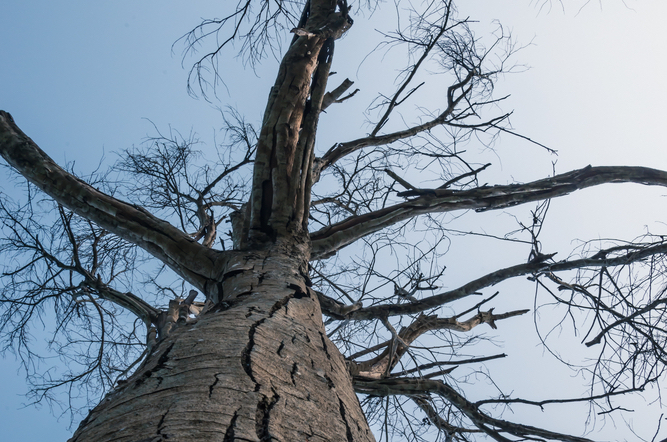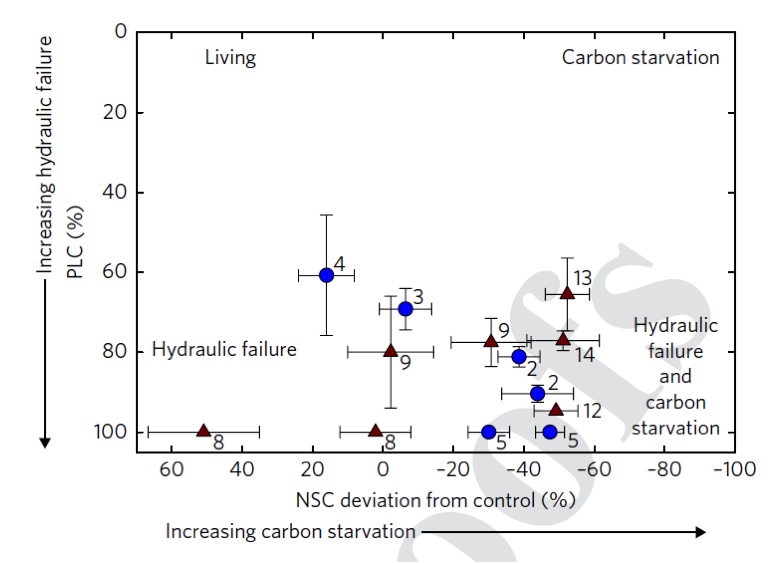 This is the first paper to synthesize the results on mechanisms of mortality from all known drought manipulation studies, and found that hydraulic failure is a universal component of death while carbon starvation is frequent but not universal.
This is the first paper to synthesize the results on mechanisms of mortality from all known drought manipulation studies, and found that hydraulic failure is a universal component of death while carbon starvation is frequent but not universal.
The Impact
This paper 1) tests a contentious hypothesis regarding hydraulic failure and carbon starvation, for the first time, at a global scale, 2) provides modelers a direct path to improving vegetation dynamics simulations.
Summary
About half of carbon dioxide emissions are absorbed by plants, but this service is threatened by increasing frequency of hot droughts. One of the largest uncertainties in land surface modeling is how vegetation will respond to greater exposure to life-threatening droughts. One of the most contentious theories in ecology today regards the mechanisms of responses e.g. how plants regulate hydraulic failure and carbon starvation (if they even occur at all) during drought. We reviewed all known drought studies that killed trees and found that hydraulic failure was a universal characteristic proceeding death, and co-occurring carbon starvation occurred in approximately 50% of studies. The most advanced land-surface models today simulate mortality via carbon starvation but not via hydraulic failure, thus a change in model development priority to simulate hydraulic failure is merited.

Contacts (BER PM): Daniel Stover, SC-23.1, Daniel.Stover@science.doe.gov (301-903-0289)
PI Contact: Nate McDowell, Pacific Northwest National Lab, nate.mcdowell@pnnl.gov
Funding
Funding was provided by DOE, Office of Science, NGEE-Tropics, via the Los Alamos and the Pacific Northwest National Lab’s LDRD program, an via NSF.
Publications
Adams et al. (61 co-authors). A multi-species synthesis of physiological mechanisms in drought-induced mortality. Nature Ecology and Evolution (In Press)